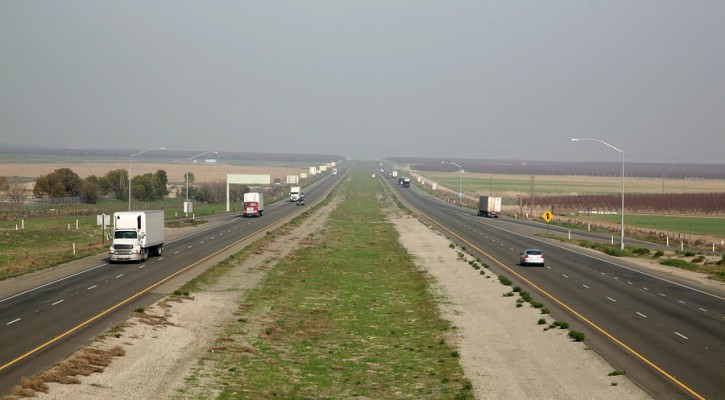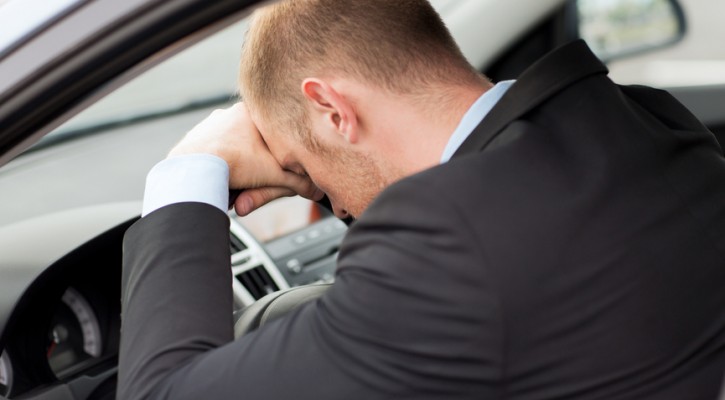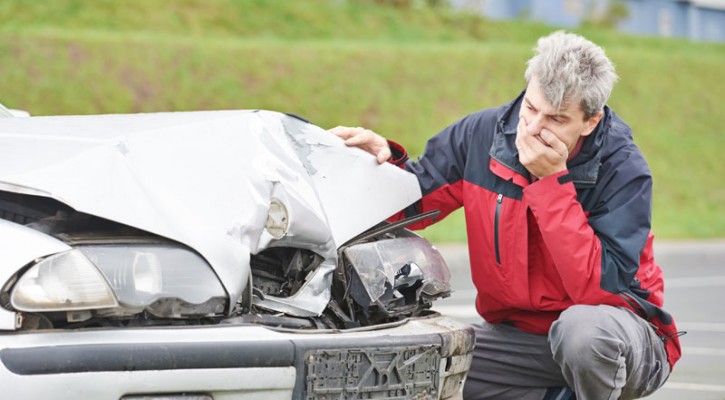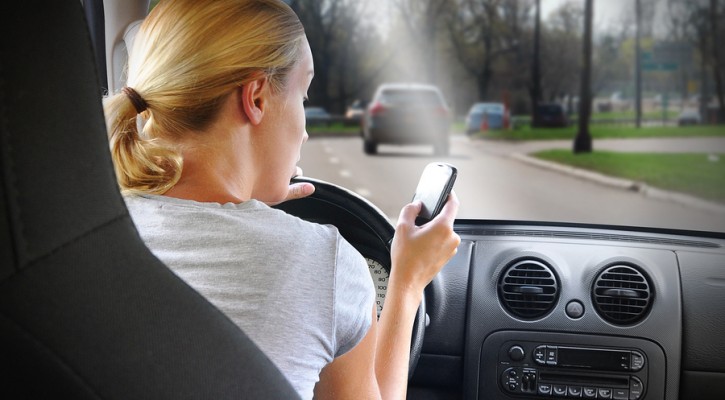Category Archive: Legislation

Reducing Drunk / Drugged Driving
March 26, 2014
An Illinois law that requires ALL drivers convicted of DUI to install an interlock device in their vehicle is showing positive results. California is also testing devices for law enforcement use that not only detect alcohol but drugged driving as well. Read more: Illinois Helps Lead Nation in Drunk Driving Prevention

New Mexico Becomes 42nd State To Ban Texting While Driving
March 26, 2014
New Mexico Governor Susana Martinez signed a new bill banning texting while driving in New Mexico. Read more: Gov. Martinez signs texting while driving ban bill

AAA Against Proposed Speed Limit Increase In Florida
March 17, 2014
The American Automobile Association (AAA) has come out against a measure proposed by Florida State Senator Jeff Brandes to increase the speed limit on Florida’s interstate highways.
Read more: 75 mph? AAA against raising Florida’s speed limit

Florida Legislature Proposes Booster Seat Law
March 17, 2014
Florida is one of only nine remaining states that do not yet have an effective child restraint law for children but a bill proposed by State Rep. Keith Perry, R-Gainesville is trying to change that. House Bill 225 would require that children in cars be placed in a booster seat until they are at least seven years of age or 4 feet, 9 inches tall.
Safety experts have long known that graduating a child from child safety seats to seat belts too early can be life threatening to the child. Since the late 90s, the Insurance Institute for Highway Safety has pushed for stronger laws requiring that children who outgrow their child safety seat (usually at age 3 or 4) graduate to a booster seat rather than seat belts only. The problem is that seat belts tend to ride up on small framed children and, rather than restraining the child by pushing against the hip bone or sternum in a crash, the seat belt can cut into the soft tissue of the abdomen and cause severe injuries. Placing the child in an approved booster seat increases the child’s height relative to the seat belt and properly positions the seat belt to provide maximum protection to the child.
In 2001, five states passed laws requiring the use of booster seats for older children. Currently, 42 states have some sort of law requiring use of booster seats. In 2002, President Bush signed a law requiring that the National Highway Traffic Safety Administration (NHTSA) develop performance criteria for booster seats to help parents choose the correct booster seat for their child.
The IIHS recommends that children remain in a booster seat until they are at least 4 feet, 9 inches tall. Among the states that have passed booster seat laws, at least 21 list that height requirement before children can graduate to seat belts.
In 2001, the Florida legislature passed a bill requiring the use of booster seats but then Governor Jeb Bush vetoed the bill stating he didn’t want tourists who were unfamiliar with the law to be ticketed for failure to comply with the law. In 2011, the Florida Senate passed a bill requiring the use of seat belts but the measure died in the House.
Often with auto safety measures, people tend to ignore or are unaware of the dangers until the measure becomes law. Once mandatory seat belt laws were passed in all 50 states, the rate of seat belt use increased from 75% to 85% between 2002 and 2010. NHTSA has credited the mandatory seat belt laws with saving an estimated 11,949 lives in 2011.
According to NHTSA, “among children under age 5, an estimated 263 lives were saved in 2011 by restraint use. Of these 263 lives saved, 245 were associated with the use of child safety seats and 18 with the use of adult seat belts.”
This measure, if passed could help save lives. To find your Florida legislator and express your feelings on this matter visit: http://www.flsenate.gov/Senators/Find
For more information on booster seats and how to choose the best booster seat for your child, visit: http://www.iihs.org/iihs/ratings/child-boosters

Slowpokes In The Left Lane
March 14, 2014
A little known law went into effect in Florida on July 1, 2013 that should make a lot of frustrated drivers very happy. The law, part of a larger transportation bill amended Chapter 316 of the motor vehicle code making it illegal to linger in the left-hand lane of multi-lane highways.
We’ve all been there; driving on a multi-lane roadway when traffic ahead slows. You don’t want to speed but you would like to at least do the speed limit. You pull over into the left lane to pass only to meet another driver in the left lane who is driving slower than the speed limit and holding traffic back. It’s frustrating and, in some instances, dangerous.
A lot of people refer to the left lane as the “fast lane” but there is actually no such thing as a “fast lane”. There is however a passing lane and it’s the far left lane. It exists to allow drivers who want to get around slower moving traffic to pass. The only reason for a driver to be in the left lane is to pass or to make a left turn. Once you have passed the slower traffic, you should move, as soon as it is safe to do so, back into the right hand lane so that others may pass.
Some drivers have the feeling that, “As long as I’m doing the speed limit, I have a right to be in the left lane and anyone who wants to pass me is speeding and needs to slow down.” That’s a dangerous attitude to have. Unless you’re a police officer, you shouldn’t take it on yourself to try to make others obey the traffic laws. Even if and especially if other drivers are speeding, you should move to the right and allow them to pass.
When a driver drives slower than the flow of traffic in the left lane, it tends to frustrate other drivers and could lead those other drivers to engage in risky behavior such as tailgating, lane weaving, or passing in no-passing zones. In extreme cases, it can lead to incidents of deadly road rage. Aggressive driving and road rage are reaching epidemic proportions in the US and safe drivers should do whatever they can to avoid those situations and allow the aggressive driver plenty of room to pass by.
Under Florida’s law, a driver traveling more than 10 mph under the posted speed limit can be given a ticket for obstructing traffic. However, drivers shouldn’t have the attitude that as long as they are doing less than 10 mph under the speed limit or even if they are doing the speed limit that they can remain in the left lane. Use the left lane only for passing and, unless you’re passing someone else or preparing to turn left, stay in the right lane.
Florida isn’t the only state with a left-lane slowpoke law. Illinois has had a similar law since 2004. In New Jersey, the fine for lingering in the left lane increased up to $300 in 2012. A similar law is under consideration in the Georgia legislature.

Minimum Drinking Age Saves Lives According To Research
March 10, 2014
An article published in the Journal of Studies on Alcohol and Drugs shows that the minimum legal drinking age of 21 saves lives. “The evidence is clear that there would be consequences if we lowered the legal drinking age,” said lead researcher William DeJong, Ph.D., of Boston University School of Public Health. Read more: http://www.sciencedaily.com/releases/2014/02/140224081655.htm

Closing The Hit and Run Loophole
February 26, 2014
A new law is making its way through the Florida legislature that will close a loophole that many feel has been open too long. Many feel that drunk or drugged drivers have gotten the word that it’s better to flee the scene of a collision and escape the severe penalties of a DUI and wait until they’re sober to turn themselves in on the less severe charge of Leaving the Scene of a Collision.
The bill is known as the “Aaron Cohen Life Protection Act.” Aaron Cohen was a bicyclist who was struck and killed by a motorist who fled the scene of the collision in February of 2012. The driver turned himself into authorities a day later and was charged with leaving the scene of a collision. There is no way to know if the driver had really been under the influence but, if he was, the period between the collision and turning himself into authorities gave him plenty of time to sober up. He was eventually sentenced to just under a year in jail. Had he been charged with DUI Manslaughter, under Florida law, he would have had to serve a minimum of four years in prison.
The new law seeks to prevent drivers from fleeing the scene of a collision by making the penalties just as harsh as the DUI laws. Under the new law, a driver who flees the scene of a collision will have to serve a mandatory prison term of:
- Three years if the crash results in injury to a person;
- Seven years if the crash results in serious bodily injury to a person; or
- Ten years if the crash results in the death of a person.
In addition to the above, the driver will:
- Have his or her driver license revoked for a minimum period of at least 3 years
- Participate in a victim’s impact panel session in a judicial circuit if such panel exists; or
- Participate in a driver education course relating to the rights of vulnerable road users relative to vehicles on the roadway.
- Serve 120 community service hours in a trauma center or hospital that regularly receives victims of vehicle accidents.
- Pay restitution to the victim or victim’s family (this is in addition to fines, court costs, etc.).
The bill, so far, has made it through both the Criminal Justice Committee and the Transportation Committee with unanimous support. It now goes on to the House and Senate for approval. For anyone wishing to voice support of the bill, you can write to your legislator at: https://secure2.convio.net/madd/site/Advocacy;jsessionid=F595F92F3D08EFACD9B029BEFAADB248.app263b?cmd=display&page=UserAction&id=1345
For more information on the bill visit the Aaron Cohen Law website.

Which states have the highest texting and driving fines?
December 30, 2013
Though fatal car crash rates seem to be on the decline, texting and driving ultimately remains a national health issue. However, fatal car crashes as a result of cell phone use (texting, talking, or even reaching for your phone) are definitely increasing. This is supported by the fact that the main cause of death among teen drivers is texting, and not drinking. As a result of the harrowing figures associated with texting and driving, 46 states have decided to pass legislation banning the action, yet fines differentiate throughout the country.
States and their accompanying fines
If you live in California, a maximum penalty for a first-time offender could remain as low as $20, while the State of Alaska will cite you for $10,000 and a year in prison. In a simple twist, some states do not allow officers to pull over a motorist solely for cell phone use, but will allow them to cite the driver on top of another penalty. Some other states that impose hefty fines are Maine, Indiana, and Oregon ($500 each), as well as Utah ($750). Other states with fines $100 and up include: Georgia ($150), Mississippi ($100), North Carolina ($230), Virginia ($125), West Virginia ($100), Nebraska ($200), Washington ($125), Wisconsin ($400), Minnesota ($135), North Dakota ($100), Michigan ($100), Ohio ($150), New York ($243), Pennsylvania ($140), Louisiana ($175), and Hawaii ($200).
States with little or no fine incurred
Some states are a bit behind schedule in dealing with this issue, as states like, South Carolina, Arizona, Montana, and South Dakota currently do not have a ban on the action. States such as, Texas, Oklahoma, New Mexico, Alabama, and Missouri place bans solely on new drivers or bus operators when it comes to texting and driving. This is quite shocking, for an article found on motherjones.com claims that there are 660,000 drivers using phones or electronic devices during any given time of the day! Though 95 percent of drivers claim that texting and driving is obscenely dangerous, only 35 percent have admitted to reading a text while driving within a 30 day period. Surely the states that are lacking anti-texting legislation will be on board soon, for their crash rates are much larger than those with the bans.
What can be done?
To avoid texting and driving fines, you simply need to not text and drive. As contrite or “played out” as it may sound – it is not worth it! For more information on statistics regarding texting and driving, simply visit itcanwait.com, which is a great anti-texting-and-driving campaign that has garnered a majority of the public’s attention. So be safe out on the road over this holiday season; you don’t want that text to be your last.

Florida ‘Texting While Driving’ Ban Now in Effect
December 7, 2013
Following public outcry for anti texting and driving legislation, Florida has now jumped aboard that ship. On Tuesday, October 1, Governor Rick Scott signed SB 52 into law. The bill, which was championed by Senator Nancy Detert, has taken the past four years to be signed into law.
Under SB 52, Florida now joins the majority of states in the U.S. in adopting this type of legislation. As a secondary offense, however, drivers must be stopped for a separate traffic offense prior to being ticketed for texting and driving.
“As a father and a grandfather, texting while driving is something that concerns me when my loved ones are on the road,” said Scott. “The 100 days between Memorial Day and Labor Day are known as the deadliest days on the road for teenagers.”
Teenagers are not the only ones texting and driving, though. A 2012 study conducted by the AA Foundation for Traffic Safety found that two-thirds of drivers admitted to reading a text or email while driving. Some advocates, however, feel that the new legislation does not go far enough, due to texting becoming a “secondary offense.”
“It’s too weak,” explained Steve Augello from Spring City, whose daughter was killed by a distracted driver. “A $30 fine? A teenager that works in McDonalds could afford a $30 fine, so it’s not going to make too much of a difference.”
“I think a year of secondary enforcement is good,” said Senator Maria Sachs. “This will begin to change the culture, but I feel that it really should be a primary ban.”
The Florida seat-belt law was signed into law in 1986 as a secondary offense, but it wasn’t until 23 years later that more restrictions were place on drivers. In a 2009 bill, sponsored by Representative Irving Slosberg, which gave police the authority to stop and ticket motorists for not wearing seat belts.
Slosberg has based his legislative career on traffic safety, and also feels that the punishment attached to the bill is too lax. Slosberg claims that the bill was gutted by powerful lawmakers in three camps: people who do not like police, those who proudly text and drive (they exist?), and people with libertarian political leanings.
“[This] started off as a primary [offense, but] turned out to become a secondary offense,” said Slosberg. “You can text in traffic jams, you can text at red lights, it’s only $30 for a ticket, and police cannot even confiscate cell phone records unless you kill or seriously injure someone.”
Last year in Florida, there were over 4,500 accidents associated with distracted driving via the use of electronic devices. Of these crashes, there were 255 crashes directly linked to texting, though many feel that the actual number caused is much higher.
